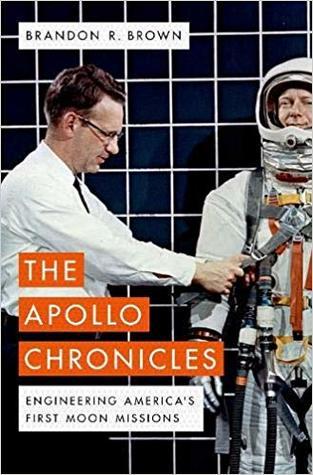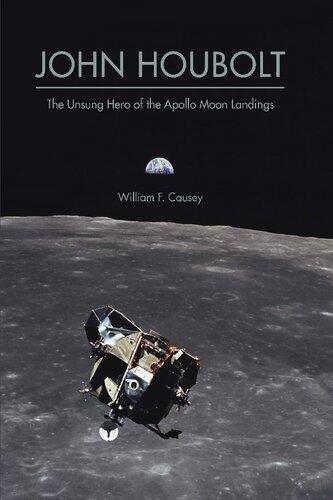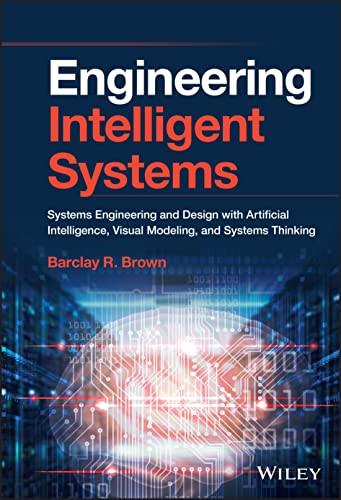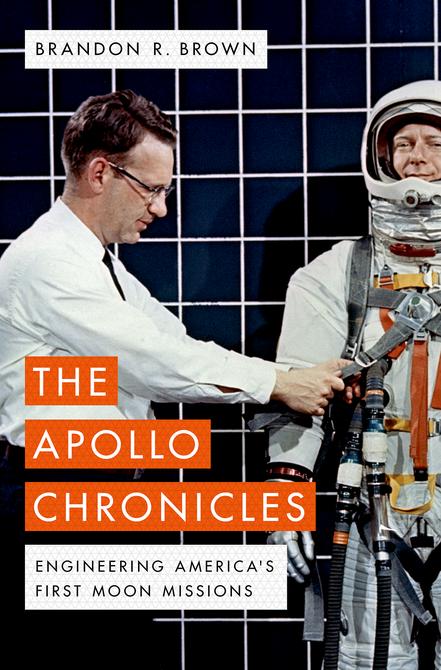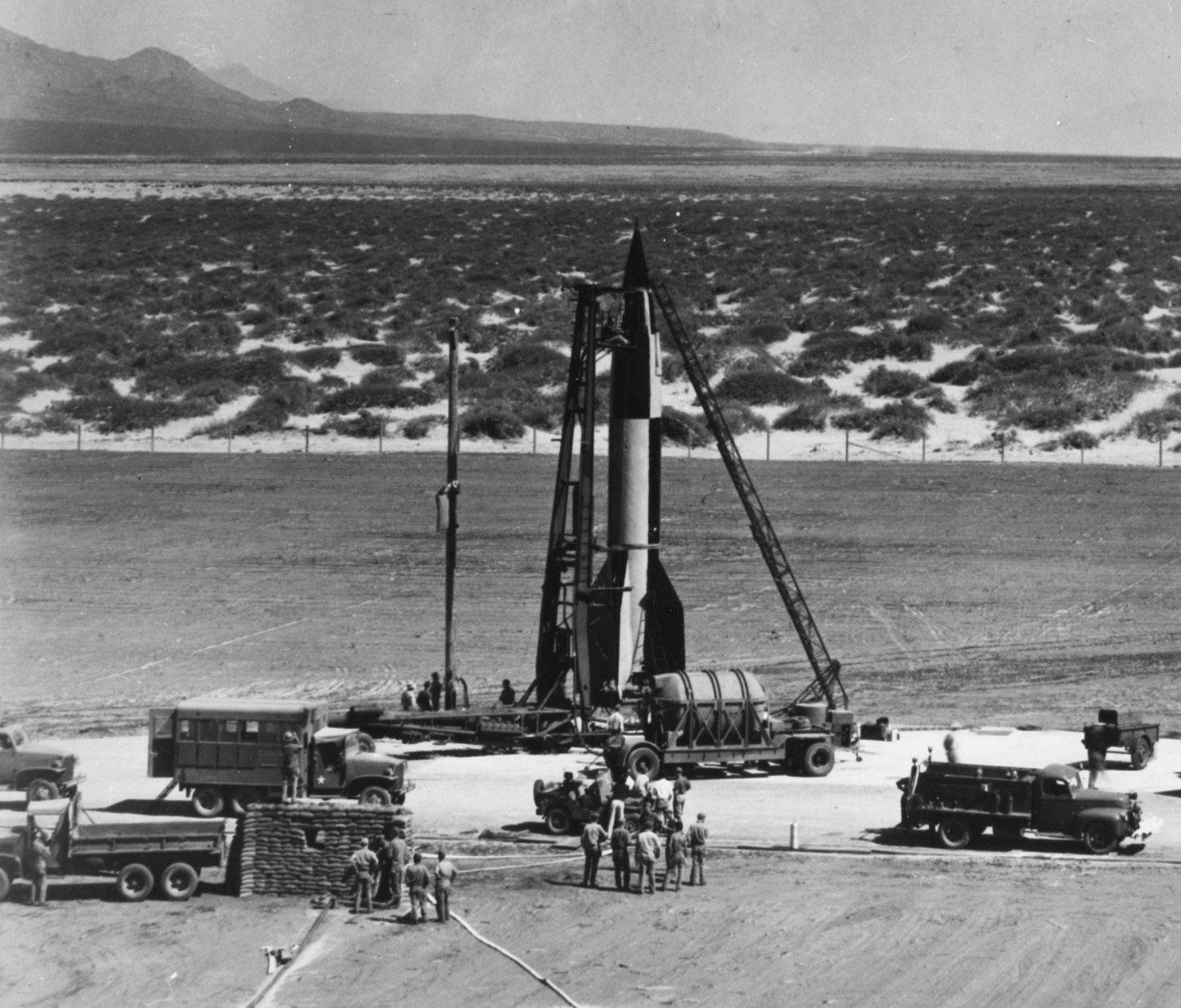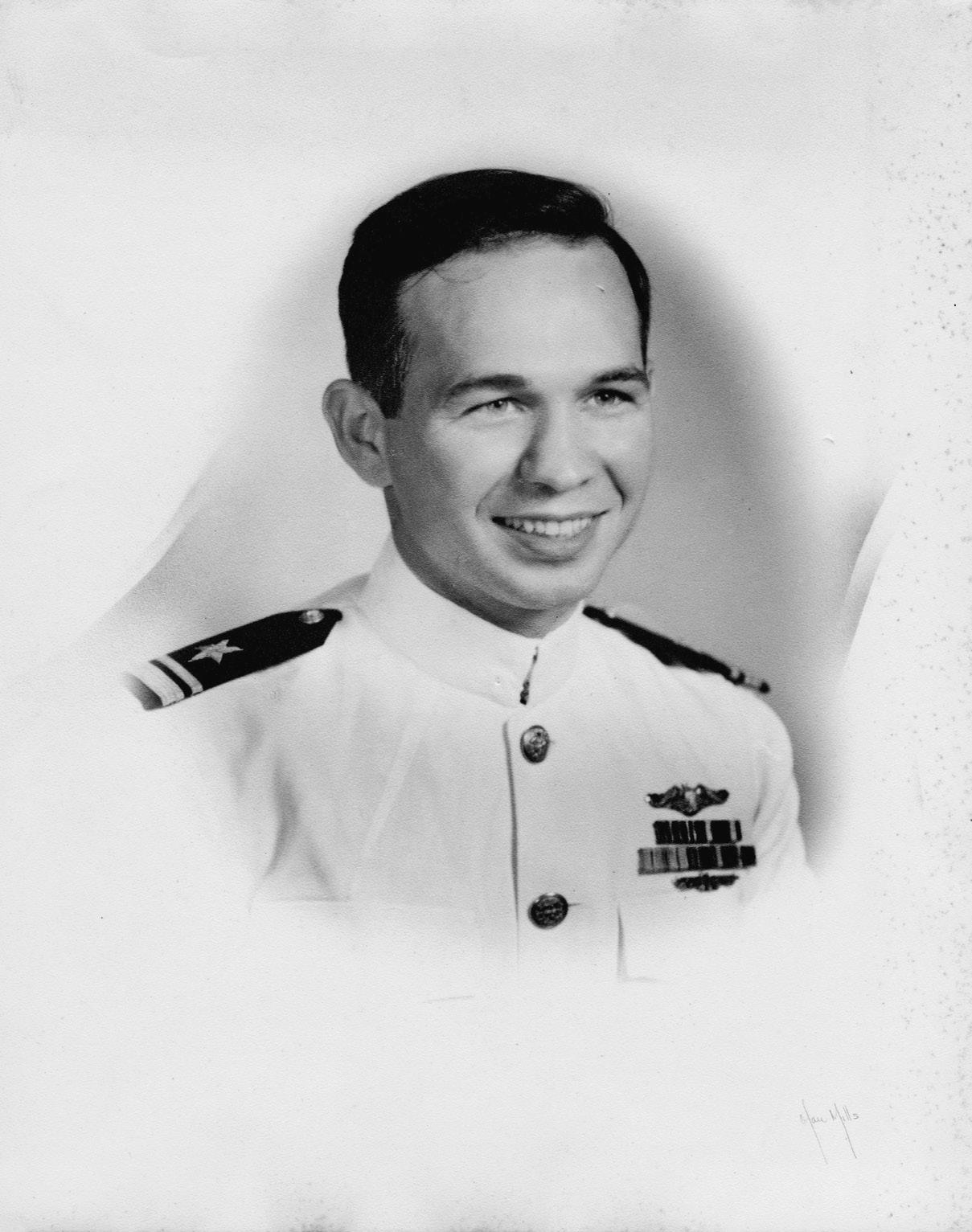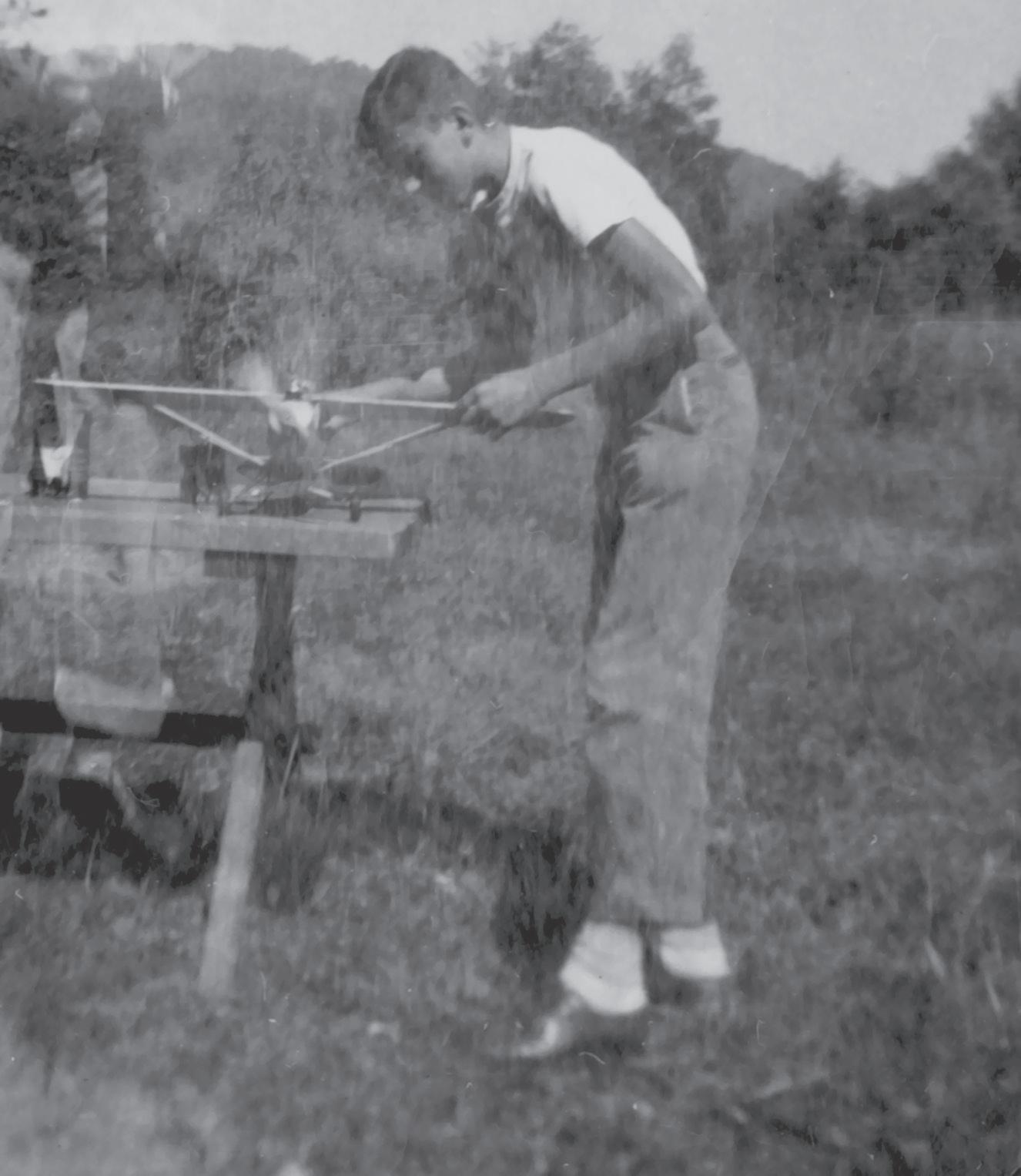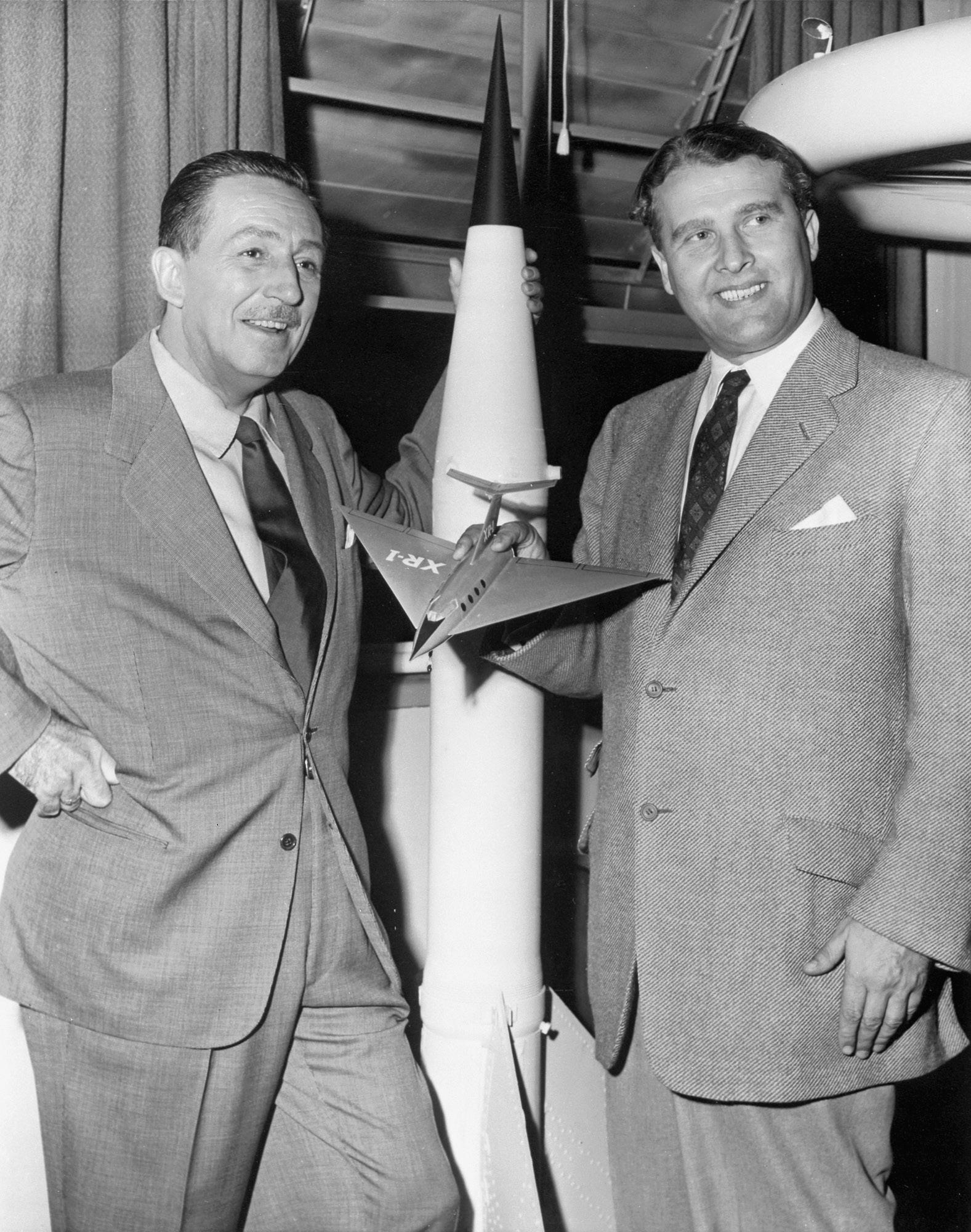The Apollo Chronicles Engineering
America’s First Moon
Missions
Brandon R. Brown
Oxford University Press is a department of the University of Oxford. It furthers the University’s objective of excellence in research, scholarship, and education by publishing worldwide. Oxford is a registered trade mark of Oxford University Press in the UK and certain other countries.
Published in the United States of America by Oxford University Press 198 Madison Avenue, New York, NY 10016, United States of America.
© Brandon R. Brown 2019
All rights reserved. No part of this publication may be reproduced, stored in a retrieval system, or transmitted, in any form or by any means, without the prior permission in writing of Oxford University Press, or as expressly permitted by law, by license, or under terms agreed with the appropriate reproduction rights organization. Inquiries concerning reproduction outside the scope of the above should be sent to the Rights Department, Oxford University Press, at the address above.
You must not circulate this work in any other form and you must impose this same condition on any acquirer.
CIP data is on file at the Library of Congress ISBN 978– 0–19– 068134– 0
Printed by Sheridan Books, Inc., United States of America
For my father and my mother.
For the Apollo engineers and their families.
Preface ix
Acknowledgments xiii
1. 1945— Origins 1
2. 1957—Paths, Power, and Panic 12
3. 1960—Silent Movies and Old-World Evenings 24
4. 1961—A Toddler’s Marathon 42
5. The Moon 60
6. 1962—Punch Cards and a Key to the Trunk 64
7. 1964— Of Doubts and Bugs 80
8. 1965—Saturn Breathes 99
9. 1966— Of Software and Star Balls 115
10. 1967—From Madness to Miracle 133
11. 1968— Of Timeless Views and New Perspectives 147
12. 1969—Alarms and Lightning 170
13. 1972—From Rovers to Regrets 197
14. 1981—Farther Along 215
15. Today—Mementos and Returns 222
16. How We Did It 230 Notes 241 Bibliography 255 Index 259
Preface
On a winter’s night three years ago, I looked up at the full Moon, with its dark and light patches, and realized all at once that I knew very little about my father’s early career. Almost nothing. I’d met many of his fellow engineers, heard stories of their quirks and their humor, but I had no idea what living and working the Moon missions was like in the 1960s. As of this writing, my father has just turned eightyfive. He has some very sharp memories of certain segments and certain projects, while other parts are understandably hazy now. After I started peppering him with questions, he brought out a box of keepsakes and memorabilia from his career days, talking through a review of each piece. He also shared a few phone numbers with me, of surviving colleagues. And when I showed him a list of names from NASA’s archive of oral histories, he gamely circled those he knew would have interesting and important stories to tell.
I started reading everything I could find about Apollo—America’s program to land people on the Moon and return them alive to our planet’s welcoming surface—and the steps that came before it. Many wonderful narratives focus on the astronauts and the blow-by-blow missions in space. But I mostly wanted to understand the project’s earthly trenches, with engineers sweating details, deadlines, and decisions of a sort no person had faced before. In the eleven years spanning the formation of NASA in 1958 to the first Moon landing in 1969, the engineers cleared or circumvented every hurdle. If they did not solve every problem, they solved most and cleverly soothed the rest. Another set of books, fewer in number, detail the engineering work, including the piles of acronyms, the shifting, expanding organizational charts, the precise titles and versions of the various systems of each rocket, spacecraft, testing platform, and so on. The combination of NASA’s strange internal parlance and Apollo’s monumental technical complexity raises a significant hurdle for many readers who might otherwise want to understand the work, the process, and the experience. What was it really like, day to day and month by hectic month?
The Apollo engineer Peter Armitage once told an interviewer, “The real story is in the people and why they behaved the way they behaved. Nobody’s ever written a book like that yet—the real people, the mistakes they made.” With humility, I have tried to write a book that could leave the remaining engineers nodding in approval. But
I also have written this book for anyone my age or younger. I was born in early 1969, months before the first Moon landing, and by the time my generation became aware of the world, Apollo was old news.
This book is not a memoir. As the least interesting element involved, your author will now recede. Neither is it my father’s story, though a few of his anecdotes will improve the pages that follow. And while I now appreciate just how brave our astronauts were, to sit on towers of explosive fuel and venture into a deadly realm, this book is more concerned with the astronauts’ protectors. In it, I focus on the Earth-bound: the welders of space-worthy seams, the designers of heat shields, the stitchers of spacesuits, and those who computed razor-thin trajectories through space, with disaster awaiting any deviation or missed step. As you read, you’ll sit with the mystified engineers who, barely out of college, watched warning lights blink on at the worst possible times. You’ll hunker with the rocket engineers in the shaking walls of a block house during tests of the world’s most powerful rocket engines. You’ll crawl with draftsmen over sprawling, improvised tables, drawing around the clock to complete hundreds of schematics. And you’ll sit with young, farm-raised Americans learning rocketry from imported German experts.
The stories, even the ones we haven’t yet lost, are nearly endless. Any attempt to comprehensively honor the four hundred thousand minds that pioneered the missions would be as impossible to assemble and write as it would then be to read. You will meet a number of the engineers but avoid long parades of names. This book will explore the Apollo years using a handful of main characters like blood cells moving through the various limbs of NASA. I want to urge the reader against the impression that these individuals were super-human. Two were most definitely visionaries, but I’ve selected others because they were involved in key milestones, worked in multiple parts of NASA, and, crucially, have retained detailed memories of the Apollo era.
The first act of a dramatic arc to the Moon began in October of 1957. When the Soviet Union put a metallic “artificial moon” in orbit around the Earth, Americans quite nearly lost their minds. What did it mean that our enemies, at unprecedented speeds and heights, could methodically paint these bands—these orbits— again and again over our skies? Could the Sputnik see us? Was it a hostile device? Could it drop an atomic bomb? As the political historian Walter McDougall wrote, “For the first time since [the War of 1812] the American homeland lay under direct foreign threat. . . .” Newspapers compared flat-footed America to “some fat Roman lolling in the baths” before a barbarian invasion.1
Never mind catching up, the nation thought. How could we get into space at all? What did the country have in its engineering cupboard? If nameless Soviet scientists were plotting even larger and more menacing missions, who would lead the way for the humiliated United States?
Before experiencing 1957, you will meet some of our cast in earlier times. In most cases, they had little inkling that history would sweep them up and push them onto a brightly lit technical stage. The world would soon watch them working in a theater of bewildering scale and scope. When the curtain rushed open, they would stand without script or rehearsal, looking to one another for whatever relevant experience they could muster. And to a surprising extent, humanity’s peaceful path to the Moon relied on ideas born in war.
July 2018
Acknowledgments
I first want to thank the engineers and scientists I have interviewed. In sharing their recollections and expertise, the following people breathed great life info this project: Bob Austin, Hal Beck, Eugene Benton, Aldo Bordano, Robert Brown, Marlowe Cassetti, Nesbitt Cumings, Caleb Fassett, Gerry Griffin, Mack Henderson, Frank Hughes, John Kastanakis, Ed Kowalchuk, Arnolia McDowell, Elric McHenry, Jack Miller, Thomas Moser, Debra Needham, Lee Norbraten, Catherine Osgood, Thomas Parnell, Henry Pohl, Wesley Ratcliff, William Sneed, Ken Young, Renee Weber, Cynthia Wells, Don Woodruff, and Len Worlund.
I want to acknowledge Hal Beck, Lee Norbraten, Thomas Parnell, and Henry Pohl for sharing some of their unpublished writings about their careers.
For providing further background and for their interview time, I thank Ann Faget, Carol Faget, Guy Faget, Chip Lord, and Karl Pohl.
For historical and archival assistance, I gratefully acknowledge Brian Odom, Historian at the Marshall Spaceflight Center in Huntsville, Alabama; Pat Ammons and Carolyn Lawson of the United States Space and Rocket Center in Huntsville, Alabama; and Steve Garber and Bill Barry of the NASA History Office in Washington, D.C.
In terms of source material, I acknowledge all those who have compiled and documented so very much already, and I apologize to those I have yet to discover. I leaned heavily on NASA’s Oral Histories project, incorporating dozens of voices from those digital archives. The book Apollo: The Behind-the-Scenes History of the Most Triumphant Years of America’s Space Program, by Charles Murray and Catherine Bly Cox, was a wonderful companion on my learning curve. Finally, a lesser known tome, Dr. Space: The Life of Wernher von Braun by the late Bob Ward, provided an intimate portrait of the rocket pioneer and his center in Huntsville, Alabama.
I want to gratefully acknowledge the patient and eagle-eyed readers of various drafts: Dana Smith, Sue Brown, Arden Hendrie, and Dean Rader, as well as, from the Apollo era, Robert Brown, Gerry Griffin, and Frank Hughes. All of these people improved the book, and any remaining errors are mine alone.
I appreciate Jeremy Lewis, my editor at Oxford University Press, very much for his trust, support, and astute suggestions. I also want to acknowledge the expert and
timely assistance provided by Book of Earl Indexing. As always, I thank my agent, Jennifer Lyons, for her guidance, encouragement, and brainstorming.
Some research costs were covered by the University of San Francisco’s Faculty Development Fund. I also appreciate the supportive community of my department at the University.
Finally, special thanks go to my wife, Dana, for her daily patience and reflection as I nattered about this project. Olive the whippet also endured it, with many a heavy sigh.
1945— Origins
After surrendering to American forces in May of 1945, the lead scientist of Nazi Germany’s rocketry program prepared to embark for the United States. Wernher von Braun cooperated with his captors. He alternately charmed and shocked them with his cheerful good will and confident self-importance. (In truth, he watched his plan coming together. As he’d confided to a few fellow Germans late in the war, he had hoped to end up in the United States.) He asked if he could bring hundreds of his engineers and workers with him to America. He amazed his interrogators as he rattled off the strengths, skills, and weaknesses of each man. Washington eventually approved 118, who came to America in two waves.
In September, von Braun and a handful of his closest German colleagues deplaned at the Newcastle Army Base in Wilmington, Delaware. At age thirty-three, his first American steps were painful ones. After surviving a near-fatal car wreck in Germany, the rocket pioneer suffered from a poorly set broken arm and a nasty case of hepatitis. His new military keepers let von Braun recover his strength for a couple of weeks but then covertly booked him a civilian train ticket. When his accent attracted the questions of a fellow traveler, von Braun said he was Swiss and concocted business interests in the states.
From his window, von Braun saw the vast expanse of a nation rumble past for days. Completely unlike the craters and ash piles of Europe, this land was free of war’s scars. The trees thinned as the train clacked onward and eventually, in the middle of Texas, the grass gave up as well. He arrived in El Paso, a town perched between two stands of dry mountains. Fort Bliss became the new home for von Braun and his German colleagues. The enlisted locals deduced the basics about their new prisoners-turned-guests: These were the infamous enemy scientists, plucked from Nazi Germany and set in the cage of a rocket laboratory. They jokingly called von Braun “the Dutchman.”
The initially secret Project Overcast hauled ten thousand tons of military and industrial equipment, about seventy-five rockets (many of them in piles of parts), and six hundred former enemies from Germany to the United States, largely
whitewashing their political affiliations and wartime work. In von Braun’s case, the cleansing covered, for many years to come, his advanced rank within the Nazi war machine. He later claimed a tin ear for politics, calling himself “downright naïve” in his early political views, blind to the meaning of the changes around him. He said he was simply “too wrapped up in rockets.” When the Nazis took control of Germany, he was barely twenty-one. He joined the Nazi party and eventually became an officer in the Nazi SS (Schutzstaffel, or “protection squad”). Heinrich Himmler’s brutal wing ran the concentration camps and, for von Braun, they eventually supplied slave labor—thousands of prisoners of war and other enemies of the state toiling to build von Braun’s massive rocket weapons.1
According to the story he relayed in America, his Nazi masters had tilted his career away from his visions of space travel in favor of earthly and more nefarious trajectories. He said he always would have preferred to perch spaceships, rather than bombs, atop his rockets. He had even lapsed late in World War II, dangerously wishing aloud for the war to end so he could return to his real passions. He possessed an almost deadly naïveté, scribbling sarcastic comments like “Final victory? Well, well!” in his notes, mocking the late war slogans of Josef Goebbels. The Gestapo arrested von Braun in early 1944 and charged him with scheming to subvert the Nazi weapons program. If not for his skills, plus some friends carefully extracting him from the Gestapo’s bureaucracy, the von Braun story could have ended there. Under increased scrutiny, he followed orders and survived the war, with rocket schematics tucked under his arm.2
Once Project Overcast became public in America, it took on the more benign name “Project Paperclip,” and newspapers even printed quiet notice of von Braun’s arrival. He was just one of the “certain outstanding German scientists and technicians . . . deemed vital to our national security” who would have a “temporary stay.” For von Braun that would span the rest of his life.
At Fort Bliss, von Braun and his German colleagues expected tension with American soldiers, or perhaps retribution for years of war. But he found the opposite. The soldiers invited him to join their card games. “In America,” he later wrote, “you don’t seem to carry grudges, as do many Europeans who have been enemies.” He encouraged his fellow Germans to learn English as quickly and thoroughly as possible. They watched whatever movies they could and listened to the radio. Not long after they arrived, some Germans took to wearing cowboy hats and boots. 3
But before he could build new rockets, the Americans wanted to see his most famous work up close: He and his fellow Germans trudged into New Mexico’s nearby white sands, with loads of their rocket parts. He was to revive his chief accomplishment for Adolf Hitler, a weapon of incredible size and speed.
From von Braun’s perspective, he could help the United States develop long-range missiles, yes, but with the victors’ resources he might return to his visions of space travel. With enough time and money, he was certain he could build a rocket powerful enough to refuse Earth’s gravity and glide calmly through the cosmos. So he made a new home willingly and joined his second army within one year. “It all made sense,” he said later. “The V-2 was something we had and you didn’t have.”4 (See Figure 1.1.)
The Vergeltungswaffe-2 was the second of Nazi Germany’s “vengeance weapons.” The desperate Reich had hoped the V-2 would reverse the late course of the war.
When preparing for launch, it stood forty-five feet tall, tethered like some sort of laboratory monster. Oozing vapors, it was part science fiction and part Gothic horror. If the rocket would launch with flame, why did tendrils of super-cold mists hang from its fuel lines?
As with most combustible materials, the liquid fuel in the V-2 required oxygen to light and burn, but the air around us only offers so much. And at the heights von Braun craved, oxygen was incredibly scarce. Von Braun had his rockets carry their
figure 1.1 German and American workers prepare a V-2 rocket for a test at the White Sands Proving Grounds in New Mexico, circa 1946. (Photograph courtesy the U.S. Space and Rocket Center.)
own oxygen supply: five tons compressed and liquefied at a chilly –300˚ Fahrenheit. The use of liquid oxygen predated von Braun. As a student, he had absorbed the speculative idea while reading The Rocket into Interplanetary Space by his eventual mentor, Hermann Oberth. In the early 1920s, Oberth had exchanged letters with the American physicist and rocket pioneer Robert Goddard. And, largely unknown to those tinkering dreamers, the Russian schoolteacher and visionary Konstantin Tsiolkovsky had already proposed using liquefied oxygen many years before.i As with so many technologies, when civilization was ready to make a leap, an idea bubbled forth in many places and from many minds.5
Rendering all previous work quaint by comparison, von Braun’s engines pumped oxygen to meet ethanol in a fiery brew. “The whole sky seemed to vibrate,” said one team member of their first successful V-2 test. “This kind of unearthly roaring was something human ears had never heard.” They understood they had sparked a new era. As their rockets sped from our thin atmosphere and first grazed what lay beyond, they started humanity’s journey into space.6
Germany’s rocket weapons, launched by the hundreds against Belgium and southern England, alarmed the Allies, but the sonic boom of the rockets proved worse than their bite. Frequently inaccurate, they had little effect on the course of the war, but they indirectly shifted the fate of an American family and the nation itself.
Aiming to defang Germany’s rocket threat, the Allies hatched an ill-conceived marriage of self-guided rockets with Japan’s kamikaze attacks. Operation Aphrodite was a failed U.S. attempt to have small crews take off in explosive-packed bombers, turn piloting over to radio remote control, and parachute to safety before the dronelike vehicles struck German rocket facilities. An experienced American pilot named Joseph Kennedy, Jr., volunteered for the risky missions. As he prepared to leap from one such bomber, his cargo detonated prematurely. The heir apparent to the Kennedy family’s political ambitions died in a fireball over the English Channel.
In the summer of 1945, with von Braun starting a new life in America, a younger Kennedy walked through the ashen ruins of Germany. At the age of twenty-eight, John had just started his first civilian post. After surviving combat in the Pacific, he flexed his father’s connections. Hearst newspapers placed him in a prime role, documenting the war’s aftermath in Europe. But his private journal reveals less about the news of 1945 and more about a keen soul discerning the world’s shifting politics. John F. Kennedy looked at smoldering central Europe, with its new partitions, and acknowledged a new, colder war. “I do not agree with those people who advocate war now with the Russians on the argument of ‘Eventually, why not now?’,” he wrote. He
i Tsiolkovsky’s inspiration, in turn, sprang from the space-faring novels of the French writer Jules Verne.
predicted that a new technological superweapon could put the next major war on indefinite hold. These journal entries preceded the atomic explosions in Hiroshima and Nagasaki by mere weeks. “Thus Science,” he mused, “which has contributed so much to the horrors of war, will still be the means of bringing it to an end.” 7
Also in the summer of 1945, Maxime “Max” Faget toiled in another theater of war and in a very different environment. He glided through the dark depths of the Pacific Ocean. As a junior officer on the submarine USS Guavina, he returned, he presumed, to another terrifying battle with the Japanese navy. Short, lively, and shrewd, he had chosen submarine duty over other military service for one primary reason: He had never met a veteran of submarine battle with tragic injuries. It was all or nothing—a simple death or unscathed survival (see Figure 1.2).
Given that his father, the doctor Guy Henry Faget, researched tropical diseases, Max had been born in Belize and raised in British Honduras. When Dr. Faget subsequently decided to focus on a new treatment for leprosy, he returned the family to their southern roots. In Carville, Louisiana, he took over one of the nation’s largest leper hospitals. Son Max earned his mechanical engineering degree from Louisiana State University before joining the war effort.
“Max” Faget in 1944. (Photograph courtesy the Faget family.)
By August of 1945, the Guavina had already seen some of the most intense action of any U.S. submarine. After recording a number of high-profile hits on a Japanese convoy in February of 1945, the Guavina barely survived an intense seven hours of Japanese retaliation, including nearly one hundred depth charges. In relatively shallow water, the Guavina could only lie silently on the sandy bottom, hoping none of those charges would tear it open. Each underwater explosion was, according to Faget, “like a sledgehammer slamming the hull next to you.”8
Soon thereafter, the Navy alerted the Guavina of a ditching American bomber. As soon as the sub surfaced, Faget dove into the water to save a number of stunned airmen from drowning, earning him Navy commendations for bravery.
The submarine life taught Max Faget about survival in a hostile environment, a place humans were never meant to be. A machine could hold enough air around a crew to keep them alive for a surprisingly long time, even with violence swirling outside. And the submarine required a technological awareness. It had to navigate murky or sometimes pitch black realms. These long, tense hours planted seeds in Faget’s unique engineering imagination, one that would someday design ships that transformed impossible goals to practical simplicity.
This life at sea also provided moments of wonder. He later told his children about a night, on the surface, when he was keeping watch. It was a moonless night, with the water lit only by stars, and he grew nervous when he saw a bright spot growing on the Eastern horizon. If this was another Japanese squadron, the Guavina would need to dive. But no, he could see a pinpoint rising now and its orange glow spread across the calm ocean. Jupiter, king of the planets, marked a path through space and cared not one bit about little Earth or humanity’s sad wars.9
What Faget would not carry with him from his military days was any love of authority or concern for hierarchy. In his engineering work to come, his colleagues quickly came to recognize not just his quirky brilliance but also a requisite long leash. He would do things his own way, often sinking into what they called a “trance” for days on end until a new design fully revealed itself.10
Von Braun and Faget, two veterans and former enemies, adjusted to life after war, and each hungered for new peacetime challenges. They would become central cogs in America’s space-faring efforts. Other minds, by the hundreds of thousands, would also join this push to leave Earth and its atmosphere behind. In 1945, most of them were just children or teenagers.
At war’s end, a twelve-year-old named Henry Pohl worked on his family’s farm in rural Texas, and his only aim was to someday have his own land and try his hand at agriculture. During World War II, his father made a luxury purchase, a three-dollar radio, and listened to war reports during midday lunch breaks. Neighbor families
would walk over on Saturday nights to listen to the radio with the Pohls. Henry burned out their first battery (advertised to last one year) in just a few weeks because he couldn’t get enough of it. Devices captivated the young Pohl, and he still recalls the precise steps and tools his family used to dig a well, cut beams, or level a house.
The Pohls lived in what the locals called “the summer thicket,” a few miles from the small town of Ezzell (pronounced “easel”). He recalls “underbrush so thick that at places you could not crawl through it.” Henry grew up with no plumbing and no electricity. Nights ended strictly at 8:30 p.m. because Pohl senior worried over the nickel per gallon they spent on kerosene. On some winter mornings, when Henry rose to start the kitchen stove, he found the family’s tub of water frozen solid.
Henry and his brother worked alongside their father: bringing up gallon after gallon of water from the well; milking the cows; carrying cans of milk-soaked corn to the turkeys; and gathering chicken eggs. He ranks these days as the best of his long life. “I have often thought of how nice it would have been,” he says, “if my children could have had the opportunity to live one year like we lived between the years of 1940 and 1950.” Pohl has maintained a deep Texas cadence and twang. He speaks in no particular rush, choosing his words like so many engineering decisions, with care. Shortly after the summer of 1945, Pohl lived one of his proudest moments, bringing home a marvel: the family’s first tractor. He carried a signed check to town and then rode the tractor back to the summer’s thicket. “It was about forty degrees out, and it was raining. I was terribly cold and wet,” he says now. “But I was the happiest boy on this Earth.” The tractor would not provide nonstop delight, however. As Henry worked the family’s land with this new machine, the steel steering wheel vibrated so violently that his hands would be bruised and swollen by the end of each day.
Within a few years of the war’s end, not only would high-schooler Henry have built, from scratch, a sturdy barn for his family but he would also have connected their old home to the marvel of electricity. Vast swaths of rural America went without electric power until the mid-twentieth century. Henry used a Sears, Roebuck & Co. manual on wiring; it just made good, logical sense to him, and the Pohl home was one of the few to pass electrical inspection at the time. Henry was better than the professionals, a building inspector told him. But all Henry wanted was his own farm, and he planned to start in earnest after he finished high school.11
Young engineering minds blossomed everywhere as electric devices and new machines worked their way into all aspects of American life. In the small town of Elmira, New York, Marlowe Cassetti lived a less agricultural version of childhood, as a grandson of Italian immigrants. In August of 1945, Marlowe, not quite a teenager, was playing with one of his model planes when a friend rode up on a bicycle. “Did you hear the news?” the friend said. “We dropped an atom bomb
on Japan.” Neither boy really understood what the weapon entailed, but the war was soon over. And on “VJ Day,” (victory over Japan), Marlowe’s father gathered the family in their car and said they must go experience the pandemonium. Once in town, cars were everywhere, honking. A grown man sat on the hood of one, beating a little snare drum over and over, grinning ear-to- ear. “It was a fantastic relief,” Cassetti says of the celebration. “It was kind of depressing as a kid during the war.”
His father, Dr. Angelo Cassetti, had escaped crushing poverty in New York City’s slums in the early twentieth century. Angelo’s immigrant parents had told their bright boy there would be no more schooling for him—he needed to push a fish cart and bring in money—so he ran away from home and read every book he could find. By 1945, Dr. Cassetti worked in upstate New York, making house calls throughout a broad, hilly region, where doctors were scarce. Now a father of three, he maintained this passion for reading. When he returned to New York City, about once a year, it was never to visit his parents but to buy used books with his kids. “He could buy a trunk full of books for fifty cents each,” son Marlowe recalls. More often than not, Dr. Cassetti spent evenings returning to work after dinner, but on those precious nights the doctor stayed home, Marlowe recalls reading magazines with his father, including True: The Men’s Magazine, featuring fantastic stories of past lives and flying saucers.
As with many eventual NASA engineers, Marlowe was fascinated by flight. He recalls the grim Christmas holidays of 1941, after Pearl Harbor shocked the nation. His aunt brought grade-schooler Marlowe something amazing in that bonechilling December: a model airplane kit. He carefully assembled the balsa wood parts. “I’d never done anything like that,” he says. He wound up the propeller and stretched its coiled, rubber band engine. “I [would] go to one end of the kitchen, let it go from the linoleum floor, and it would fly off,” he remembers. “It was a life- changing experience.” Cassetti’s voice retains a hint of a New York accent. He speaks quickly when excited about a story, moving nimbly between delight and wry analysis.
He went on to assemble larger, gas-powered versions and helped organize a model airplane club. He gathered ten or fifteen junior-high kids, and they even had special T-shirts printed in town. “All walks of life,” he says. “Different economic classes, races, and everything else.” (See Figure 1.3.)
He struggled mightily with his first gasoline-powered model airplane. “I unrolled the large set of construction plans and started to build the fuselage from sticks of balsa and bass wood,” he says. “After many days, I realized that I was in over my head. . . . To add insult to injury, I couldn’t get the engine to run beyond some occasional pops and backfires.” An older neighbor boy (after overcoming a racial
reluctance to set foot in an Italian’s home) eventually helped Marlowe get it going. Cassetti points to that as the start of his life as an engineer.
Marlowe quickly cultivated a reputation. His junior high school yearbook listed prophesies for students. Marlowe Cassetti, it claimed, “will be happily sending rockets to the Moon.”12
Worldwide fascination with rockets had grown since the early 1920s. News outlets breathlessly reported physicist Robert Goddard’s suggestion that self-guided rockets might one day visit the Moon. And in Germany, Hermann Oberth’s writing dared to suggest that the technology could transport people into the cosmos; the first printing of The Rocket into Interplanetary Space sold out quickly, and subsequent editions spread across Europe. Science fiction stories, books, and movies adopted rocket travel as a staple. And, by 1930, filmmaker Fritz Lang had even introduced a dramatic element for starting a space voyage—the countdown—in his silent film Frau im Mond (Woman in the Moon).13
Circa 1945, a less central member of our initial cast, another twelve-year-old boy, enjoyed innocent visions of space travel in a mercifully dark movie theater, his sanctuary from Louisiana’s sticky heat. Bobbie Brown—my father—marveled at a sleek rocket weaving a black-and-white path across the screen, guided by strings and sounding like an angry electric fan.
figure 1.3 Marlowe Cassetti, with one of his model airplanes, at age thirteen. (Photograph courtesy Marlowe Cassetti.)
Bobbie was the youngest of five boys. Near their home in New Iberia, their father had worked the oil fields, shoveling coal into drilling rigs, as one fossil fuel sought to release another. Often in hand-me-down overalls, Bobbie roamed the dirt roads and swamps with his dog and best buddy, Susan. He developed what he now calls a “hungry litter appetite” as the smallest puppy at a table of older dogs. Dinner was often little more than rice and beans. As they moved about, from one oil town to the next, home sometimes had a dirt floor.
Even in rural Louisiana, they had seen constant signs of war. On the coast, pulling down blackout shades was not just a patriotic drill. Surrounded by a chorus of insects and frogs, Bobbie witnessed ghostly fires spreading on the Gulf of Mexico. German U-boats regularly torpedoed oil tankers and freighters leaving the Mississippi River. And in the streets, not even the few families with money drove new cars—the nation only built tanks and ships. Old beaters bumped through lumpy roads with stacks of cheap tires strapped to their roofs; any quality rubber went to jeep and airplane wheels, so the stateside tubes routinely burst. And in the Brown home, they prayed for the two older boys— one in the Air Force and the other in the Navy—to come home safe, while the three younger sons awaited whatever their mother could cook up with rationed staples.
When they weren’t snagging frogs, crawdads, or fish from the bayous, Bobbie and his friends loved to lose themselves in movies. By collecting pieces of scrap metal, especially copper when they could find it, they earned pocket change from Uncle Sam. In assisting the war effort, the boys could parlay a sack of scraps into a double feature.
Interspersed with dramatic newsreels from Europe and the Pacific, westerns traded screen time with installments of Bobbie’s favorite serial, “Flash Gordon.”
With the scientist copilot Dr. Zarkov, Flash used a submarine-inspired periscope to view distant worlds, enemy space ships, and the strangely cloudy cosmos. The serial’s special effects appear laughable now, but they enthralled audiences at the time. “I remember the smoke from the ship’s rocket engine would go upward, and that didn’t bother anyone,” my father says. “But there is no ‘up’ in space. We had a lot to learn.” At the time, his dreams didn’t rise much above a life with regular meals and a better fitting pair of shoes. Maybe in his boldest moments, he pictured a grown-up life that wouldn’t involve shoveling coal. Working on a rocket ship was just something for the movies.
In retrospect, our story’s cast could leave an audience shaking their heads. How could men from such different backgrounds, with such divergent dreams, find themselves knitting their brows and rolling up their sleeves together on behalf of a young president, hatching plans that lived somewhere between heresy and lunacy? It started just twelve years after the war, when their attention snapped to an alarming Cold
War surprise. Pohl, Cassetti, and Brown, with thousands of other Americans, many the first of their families to leave swamps, farms, factories, and mines, would gather in response. They followed a path set by a handful of visionary designers, including Faget and the transplanted von Braun. Together, these were the men and women for whom a Moon landing would become the unlikely last step in a long series of problems solved, calculations perfected, and gadgets tweaked.
